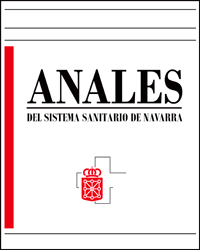Biofilms bacterianos e infección
Palabras clave:
Biofilms. Infecciones crónicas. Exopolisacáridos. Implantes médicos. Resistencia a antibióticos.Resumen
En los países desarrollados tendemos a pensar que las principales causas de mortalidad son las enfermedades cardiovasculares y el cáncer en sus múltiples modalidades. Sin embargo, los datos en Europa resultan elocuentes; las enfermedades infecciosas representan la segunda causa de mortalidad (14,9 millones de muertes), después de las enfermedades cardiovasculares (16,9 millones de muertes) y causan el doble de muertes que el cáncer (7,1 millones de muertes) (datos del World Health Organization, WHO, 2002). Los agentes infecciosos responsables de mortalidad en el hombre han ido evolucionando a medida que las medidas higiénicas y las técnicas médicas han ido evolucionando. Actualmente, las enfermedades infecciosas agudas causadas por bacterias patógenas especializadas como la difteria, tétanos, peste, cólera o la tosferina, que representaban la principal causa de muerte a principios del siglo XX, han sido controladas gracias a la acción de los antibióticos y de las vacunas. En su lugar, más de la mitad de las infecciones que afectan a pacientes ligeramente inmunocomprometidos son producidas por bacterias ubicuas, capaces de producir infecciones de tipo crónico, que responden pobremente a los tratamientos antibióticos y no pueden prevenirse mediante inmunización. Ejemplos de estas infecciones son la otitis media, endocarditis de válvulas nativas, infecciones urinarias crónicas, infecciones de próstata, osteomielitis y todas las infecciones relacionadas con implantes. El análisis directo de los implantes y tejidos de estas infecciones muestra claramente que en la mayoría de los casos la bacteria responsable de la infección crece adherida sobre el tejido o el implante formando comunidades de bacterias a las que se les ha denominado “biofilms”. Dentro del biofilm, las bacterias están protegidas de la acción de los anticuerpos, del ataque de las células fagocíticas y de los tratamientos antimicrobianos. En este artículo se describe el papel que juegan los biofilms en infecciones humanas persistentes.Descargas
Descargas
Publicado
Cómo citar
Número
Sección
Licencia
La revista Anales del Sistema Sanitario de Navarra es publicada por el Departamento de Salud del Gobierno de Navarra (España), quien conserva los derechos patrimoniales (copyright ) sobre el artículo publicado y favorece y permite la difusión del mismo bajo licencia Creative Commons Reconocimiento-CompartirIgual 4.0 Internacional (CC BY-SA 4.0). Esta licencia permite copiar, usar, difundir, transmitir y exponer públicamente el artículo, siempre que siempre que se cite la autoría y la publicación inicial en Anales del Sistema Sanitario de Navarra, y se distinga la existencia de esta licencia de uso.








